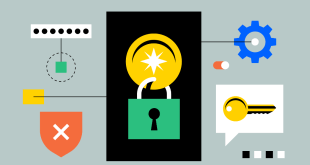In today’s digital landscape, cybersecurity has become a critical concern for businesses and individuals alike. With the ever-increasing sophistication of cyber threats, traditional security measures alone are often insufficient to protect web applications from malicious attacks. This is where Web Application Firewalls (WAFs) come into play. However, the rapid evolution of cyber threats demands more advanced defense mechanisms. In this blog, we delve into the fascinating world of AI-powered Web Application Firewalls and how machine learning is revolutionizing cyber defense.
Understanding Web Application Firewalls (WAFs)
Web Application Firewalls act as a shield between web applications and potential attackers. They analyze incoming HTTP requests, identify suspicious activities, and block malicious traffic while allowing legitimate users to access the applications seamlessly. WAFs have traditionally relied on predefined rules to detect known threats, but the dynamic nature of modern attacks necessitates a more adaptable and intelligent approach.
The Emergence of AI in WAFs
As cyber attackers continually develop new tactics, the cybersecurity industry recognized the need for smarter, more agile defense systems. This led to the integration of Artificial Intelligence (AI) and Machine Learning (ML) technologies into WAFs. AI-driven WAFs can learn from historical data, adapt to evolving threats, and make real-time decisions, making them far more effective than their rule-based counterparts.
Machine Learning for Enhanced Threat Detection
Machine Learning algorithms excel at recognizing patterns and anomalies in vast amounts of data. By analyzing historical attack data and legitimate traffic, AI-powered WAFs can identify new attack patterns and zero-day vulnerabilities. As a result, these systems can proactively safeguard web applications from previously unseen threats.
Leveraging AI for Behavioral Analysis
Traditional WAFs often struggle to distinguish between legitimate traffic and sophisticated attacks designed to evade detection. AI-based WAFs can conduct behavioral analysis on users and their interactions with the web application. By building user profiles and understanding typical behavior, AI-driven WAFs can spot abnormal activities, such as botnets and credential stuffing attacks.
AI in Real-Time Incident Response
A critical advantage of AI in WAFs is its ability to respond to threats in real-time. When a potential threat is detected, AI-driven WAFs can take immediate action, blocking the malicious traffic before it reaches the web application. This swift response is essential to minimize potential damage and ensure continuous application availability.
Advantages of Cloud-Based AI-WAFs
Cloud-based AI-powered WAF solutions, such as Cloudflare WAF, offer several advantages. They provide scalable and elastic infrastructure, allowing organizations to handle varying traffic loads efficiently. Moreover, cloud-based WAFs receive continuous updates from the provider, ensuring they stay ahead of emerging threats.
Integrating AI-WAFs into Cyber Defense Strategy
To maximize the benefits of AI-WAFs, organizations must integrate them strategically into their overall cyber defense architecture. This involves proactive monitoring, continuous threat intelligence updates, and collaboration with Security Operation Centers (SOCs) to promptly respond to emerging threats.
Common Myths and Misconceptions about AI-WAFs
AI-WAFs are vulnerable to adversarial attacks:
While no system is entirely immune to attacks, AI-WAFs are designed with robust defenses against adversarial tactics, making it challenging for attackers to bypass the AI detection algorithms.
AI-WAFs are complex and require extensive resources:
Cloud-based AI-WAFs offer simplicity and scalability, allowing organizations to implement advanced security without the need for significant hardware investments.
AI-WAFs generate too many false positives:
Modern AI-WAFs have significantly improved accuracy rates and can effectively minimize false positives through continuous learning and behavior analysis.
Frequently Asked Questions
Q1: Can AI-WAFs completely replace traditional firewalls?
No, AI-WAFs complement traditional firewalls by providing an additional layer of defense specifically tailored to web application threats.
Q2: How long does it take for an AI-WAF to adapt to new threats?
AI-WAFs can adapt to new threats almost instantly, thanks to their ability to learn and respond in real-time.
Q3: Is AI-WAF suitable for small businesses?
Absolutely! Cloud-based AI-WAFs offer cost-effective and scalable solutions, making them ideal for businesses of all sizes.
Q4: Can AI-WAFs protect against DDoS attacks?
Yes, AI-WAFs can effectively mitigate Distributed Denial of Service (DDoS) attacks by identifying and blocking malicious traffic in real-time.
Q5: What sets AI-WAFs apart from traditional signature-based WAFs?
AI-WAFs can identify zero-day vulnerabilities and new attack patterns, offering superior protection compared to signature-based WAFs that rely on known attack signatures.
Final Words
The integration of AI and machine learning into Web Application Firewalls represents a monumental leap in cyber defense capabilities. AI-WAFs can intelligently detect, adapt, and respond to emerging threats in real-time, safeguarding web applications and ensuring a secure digital environment. Embracing AI-WAF technology is crucial for organizations seeking comprehensive protection against the ever-evolving landscape of cyber threats.
 webfily
webfily



